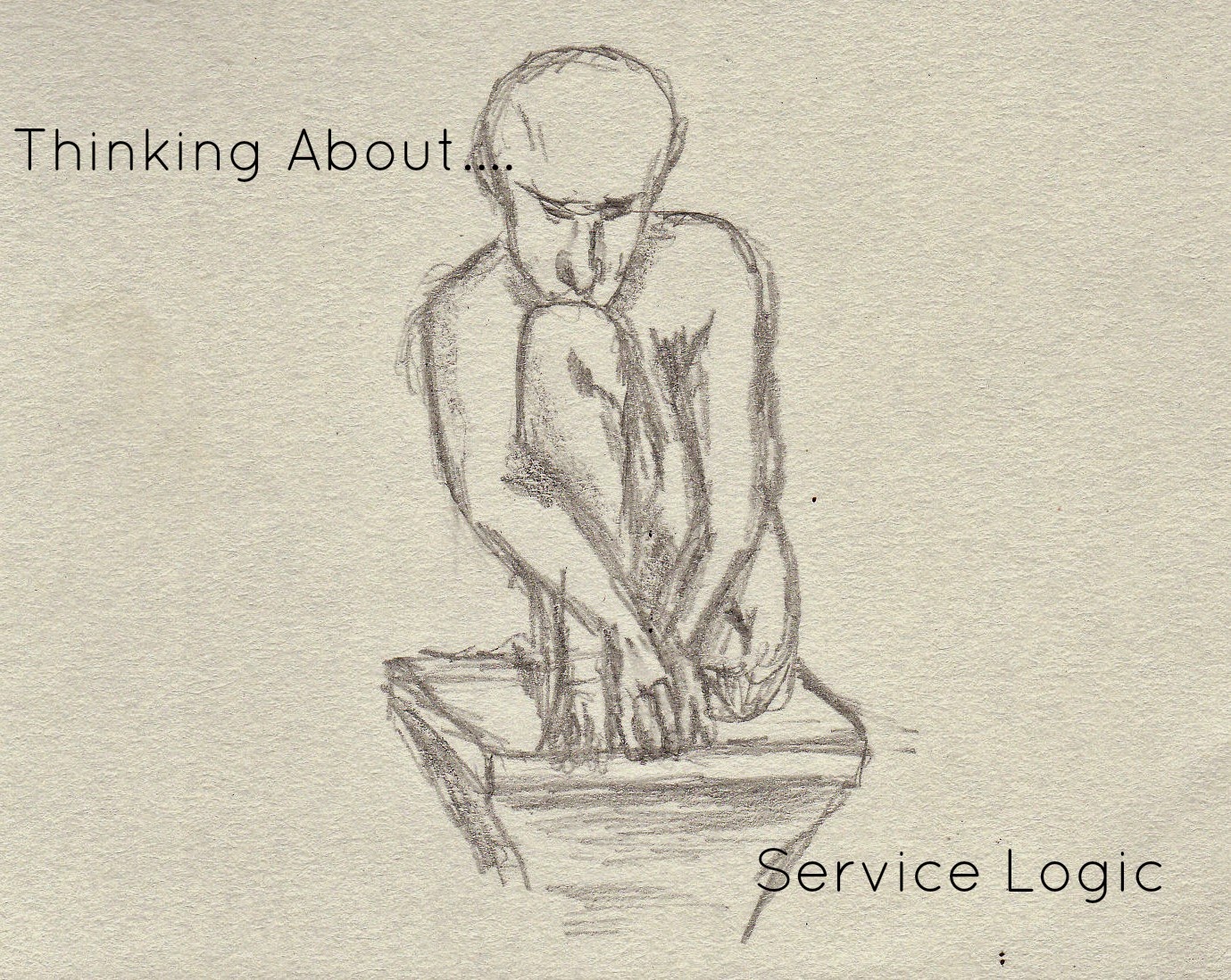Strategic thinking is a major component of business planning that sets the course of action that leads to either business success or business failure. Short-term thinking can be problematic as resources are wasted fixing potholes and gaining immediate results without considering long-term solutions. Executives that focus exclusively on short-term results sometimes leave their organizations in worse shape.
A great portion of our day is engaged in crisis management where new problems arise and we must deal with them immediately before the they spread. This process can be effective in the short run but can damage the company in the long-term when the root of the problem is not addressed. The crisis situations will continue to spread and grow as the underlying issues spread.
A strategy should focus on limiting the damage caused by crisis problems while ensuring the root problem is still being addressed. Executives who think short-term will see immediate results but will often damage long-term organizational performance. Jumping from fire to fire is a reactive strategy.
Long-term thinking can save the company money in the future by increasing competitiveness. When the company doesn’t have the ability to implement a long-term strategy, plenty of resources are wasted on counter-productive activities.
For example, a business many continue facing shut-downs due to dilapidated infrastructure. The production line breaks down frequently and requires heavy maintenance to keep going. It has a poor design and raises per product cost leaving a company slowly but surely less competitive by the year.
A long-term thinking will assess the long-term goals of the company and the strategy to get there to determine how to handle this problem. Instead of hiring new maintenance workers and dumping more money into a poor system the long-term thinker invests in a cutting-edge system that affords more adaptability to the production system.
Short-term and long-term strategy can work together. Short-term strategies can fix or minimize immediate problems through proper crisis management but will not ignore the needs of deeper problems. Short-term goals can build into long-term goals that lead to a stronger competitive stance.
Executives should ensure that short-term solutions do not supplant the long-term needs of the company. Even though solving immediate problems is attractive, it is the resolution of long-term issues that separates the exceptional executives from the rest of the herd. Developing a stronger strategy helps to reduce the frequency of short-term distractions by fixing fundamental competitive problems.
The blog discusses current affairs and development of national economic and social health through unique idea generation. Consider the blog a type of thought experiment where ideas are generated to be pondered but should never be considered definitive as a final conclusion. It is just a pathway to understanding and one may equally reject as accept ideas as theoretical dribble. New perspectives, new opportunities, for a new generation. “The price of freedom is eternal vigilance.”—Thomas Jefferson
Showing posts with label business development. Show all posts
Showing posts with label business development. Show all posts
Sunday, May 17, 2015
Monday, March 30, 2015
Solar Powered San Diego Encourages Ecological Advancement
San Diego is well on its way to becoming a city destined for environmental salvation. According to the non-profit Environment California Research & Policy Center San Diego Ranks second in the nation in terms of solar power usage. We are doing well in protecting our environment and ensuring a sustainable future. That doesn't mean we can't do more.
Creating streamlined processes for solar power installation approval as well as encouraging higher levels of solar power reliance is beneficial for setting the framework for sustainable cities. If there are any unnecessary restrictions on installing solar panels it will raise the overall customer costs and slow the pace of solar integration.
There are advantages to developing solar panels that include less reliance on outside sources of energy, lowering long-term costs, and reducing environmental costs. As more renewable sources are developed the city will lower its overall carbon footprint and slow its contribution to environmental problems.
Finding the right policies, awareness processes, and incentives helps to ensure people make a equitable choice to use renewable sources. With solar panels there is often a higher initial investment but much lower costs spread out over the duration of the panels. Making sure people understand where they can get panels and their true costs can tip the scales in consumer choice.
Solar panels and ecologically designed cities are the way of the future. Those cities in the process of transformation and building new infrastructure should consider the benefits of developing ecologically sound practices. San Diego is in a strong position to foster ecological hubs that spur new industries in environmental and blue economic development.
http://www.environmentcaliforniacenter.org/
Creating streamlined processes for solar power installation approval as well as encouraging higher levels of solar power reliance is beneficial for setting the framework for sustainable cities. If there are any unnecessary restrictions on installing solar panels it will raise the overall customer costs and slow the pace of solar integration.
There are advantages to developing solar panels that include less reliance on outside sources of energy, lowering long-term costs, and reducing environmental costs. As more renewable sources are developed the city will lower its overall carbon footprint and slow its contribution to environmental problems.
Finding the right policies, awareness processes, and incentives helps to ensure people make a equitable choice to use renewable sources. With solar panels there is often a higher initial investment but much lower costs spread out over the duration of the panels. Making sure people understand where they can get panels and their true costs can tip the scales in consumer choice.
Solar panels and ecologically designed cities are the way of the future. Those cities in the process of transformation and building new infrastructure should consider the benefits of developing ecologically sound practices. San Diego is in a strong position to foster ecological hubs that spur new industries in environmental and blue economic development.
http://www.environmentcaliforniacenter.org/
Monday, January 26, 2015
Service Logic That Solves Customer Problems
The process of developing a better service logic approach requires more than wishful thinking and running the same process over and over in hopes of doing something new. Organizations that focus on integrating their service concept throughout their operations will be rewarded through greater market relevance and customer support. It is helpful to encourage customers to be co-creators and then developing operations around their needs to ensure focus.
Integrated service frameworks relies on taking customers suggestions based on their problems, using their input to develop a salable solution, and then integrating the information throughout operations. The lens of understanding requires the company to think through customer problems and service solutions to successfully move to the next level.
Jobs-to-be-done (JTBD) offers insight into organizational needs to solve customers problems while service-dominant logic (SDL) focuses efforts on the customers needs. Using jobs-to-be-done with service-dominant logic in the viewing of firm marketing programs offers a much higher customer oriented outcome (Bettencourt, et. al. 2014). The design of the operations and marketing process should be based in solving problems.
This provides a much stronger framework for seeing how operational designs do not often coordinate well to a final product or solution. Customers don’t concern themselves with the internal mechanisms of the company but do become acutely aware when a service mistake costs them time, money, or a good time. Upset customers don’t often come back but they are often willing to share information to either the company or other customers.
Understanding customers and drawing them into finding solutions that help the organization to better align its offerings to solving marketing problems is better than shooting blindly at a market opening. The customer provides a gentle hand and will tell you what they are looking for and how to market to them. Organizations must only adjust their data gathering and strategic processes to the customer's needs.
Once the information and product is obtained from the customer it is beneficial to revisit the operations for improvement and better focus on customer needs. It is a feedback process that helps companies take in information, analyze that information, and then adjust operations to meet the market needs and improve sales. Living and breathing organizations that adjust to market problems will outlive their more stagnant cousins through greater market relevancy.
Bettencourt, L., et. al. (2014). A service lens on value creation: marketing’s role in achieving strategic advantage. California Management Review, 57 (1).
Saturday, December 6, 2014
As World's Largest Economy Does China Gain New Advantages? Should We be Worried?
For the
first time in decades the U.S. is no longer the largest economy in the world.
Despite industry experts throwing up red flags for years the inevitable
happened. According to new data by the IMF the total output of goods and
services by China is $17.6 trillion versus $17.4 trillion for the U.S. This
leaves experts scratching their heads and wondering how this could happen and
what it means for the future. Should we be worried?
Resource
Advantages:
With China
accounting for 16.5% of the world economy in terms of real Purchasing Power
Parity (PPP) and the U.S. at 16.3% of PPP it means that China has a little more
leverage in their treaties and purchasing behavior. They will be able to obtain
and receive resources at a slightly lower rate than the U.S. giving them an economic advantage.
The
advantage they have in obtaining cheaper resources for their manufacturing can
be sufficient when systematically applied across multiple industries year-after-year. A few cents on every dollar means products can be produced a little
cheaper and growth can be fueled at a slightly lower cost. Pennies can add up over millions of transactions.
Treaties:
When a country has more economic muscle they will also find that they can negotiate and enact more advantageous treaties than other nations. The power of the dollar, or in this case the Chinese Yuan Renminbi, changes the fundamentals of the terms. Countries seeking growth will latch onto and make deals with powerful countries that they wouldn't have done otherwise.
An Axis of Political Power:
China is not a stand alone nation that developed its power in isolation. It is intimately connected to other Asian countries and nations throughout the world. Country leaders look toward China for direction in fiscal, social, governmental, and military affairs. Being the biggest kid in the school yard offers a further reach for influence beyond willful intent. Nations looking for alternatives will find an ally in China.
Should We be Worried?
America is making a reemergence unseen in the past few decades. As other economies are slowing the U.S. is improving. Exports are increasing and hiring is picking up. The U.S. has nearly reached cost parity in manufacturing with China. Mammoth budgeting problems in the country are starting to be looked at and analyzed for an effective solution. It is possible that a close race of leader and follower swapping positions in an all out sprint with China will emerge for some time.
Where We Should Improve
To capitalize on the growth and improve on opportunities for the next generation it is important for the U.S. to fix problems and dysfunction where and when they occur. Improvements could be sought in educational reform; systematic law enforcement policies that foster people's capabilities; better management of budgets/debt to lower interest costs that could be better spent somewhere else; a rational economic policy that focuses on exports (i.e. hubs, innovation and jobs); responsive government that better serves the needs of the populace vs. special interests; higher technology/functionality of the military that lowers costs and enhances capabilities to combat amoebic groups; social justice and eradication of racism/religious bigotry to ensure full economic engagement and alignment to national interests; and better treaty making that strengthens U.S. manufacturing and knowledge development.
Should we be worried? That depends if you trust that people can put down their petty differences and move into collective action. The U.S. faces difficult challenges in today's world but these are surmountable challenges that require a little forethought and elbow grease. Political gridlock and dysfunction should give way to higher levels of enlightenment that creates environments where both business and people can accomplish their goals for the collective benefit of all. As a nation, we may have forgotten the spirit of what it means to be American and the core values we all believe in. It will be these values, if refreshed, that can lead the country to higher levels of performance.
When a country has more economic muscle they will also find that they can negotiate and enact more advantageous treaties than other nations. The power of the dollar, or in this case the Chinese Yuan Renminbi, changes the fundamentals of the terms. Countries seeking growth will latch onto and make deals with powerful countries that they wouldn't have done otherwise.
An Axis of Political Power:
China is not a stand alone nation that developed its power in isolation. It is intimately connected to other Asian countries and nations throughout the world. Country leaders look toward China for direction in fiscal, social, governmental, and military affairs. Being the biggest kid in the school yard offers a further reach for influence beyond willful intent. Nations looking for alternatives will find an ally in China.
Should We be Worried?
America is making a reemergence unseen in the past few decades. As other economies are slowing the U.S. is improving. Exports are increasing and hiring is picking up. The U.S. has nearly reached cost parity in manufacturing with China. Mammoth budgeting problems in the country are starting to be looked at and analyzed for an effective solution. It is possible that a close race of leader and follower swapping positions in an all out sprint with China will emerge for some time.
Where We Should Improve
To capitalize on the growth and improve on opportunities for the next generation it is important for the U.S. to fix problems and dysfunction where and when they occur. Improvements could be sought in educational reform; systematic law enforcement policies that foster people's capabilities; better management of budgets/debt to lower interest costs that could be better spent somewhere else; a rational economic policy that focuses on exports (i.e. hubs, innovation and jobs); responsive government that better serves the needs of the populace vs. special interests; higher technology/functionality of the military that lowers costs and enhances capabilities to combat amoebic groups; social justice and eradication of racism/religious bigotry to ensure full economic engagement and alignment to national interests; and better treaty making that strengthens U.S. manufacturing and knowledge development.
Should we be worried? That depends if you trust that people can put down their petty differences and move into collective action. The U.S. faces difficult challenges in today's world but these are surmountable challenges that require a little forethought and elbow grease. Political gridlock and dysfunction should give way to higher levels of enlightenment that creates environments where both business and people can accomplish their goals for the collective benefit of all. As a nation, we may have forgotten the spirit of what it means to be American and the core values we all believe in. It will be these values, if refreshed, that can lead the country to higher levels of performance.
Monday, August 18, 2014
Improving Robotics and Human Intelligence through Online Education
Human intelligence takes a heightened position in
the modern age as the use of robotic rescue equipment offers emerging
opportunities to enhance military capabilities. Human intelligence matched with
robotic equipment creates stronger interfaces between the two that extends
human capabilities. Petrisor, et. al. (2013) discusses how e-learning in a
digitized battlefield creates cooperation between human and artificial
intelligence in obtaining higher performance.
The idea for developing learning and adapting
machines was first introduced in the 1950’s by BF Skinner who wrote The Science of Learning and the Art of Teaching
as well as Teaching Machines. As a
behavioral psychologist he developed a machine that not only was intrinsically rewarding
to students but also rewarded them externally for correct answers.
The use of machines as well as the platform by which
students learn has radically improved. Online learning can do much more than
Skinner’s early experiments and now integrates various forms of media,
communication tools, and content to produce highly intensive programs for students
to learn and develop.
Online learning is a leading method of integrating
various technologies to help operate military robotics. The ability to use
information quickly, integrate technology, focus on managing and effectively
controlling robots has been tested by the Robo-Security Min-robot Project with
significant success.
The world of robotics is present and we will need
military members with high technological skills, theoretical knowledge, and
virtual functionality to work within this field. Online education is seen as an
important method of training military members who work in these fields and ensuring
that they understand how their senses work with virtual information and
physical outputs. Programs are still in their infancy and are still in the
process of being developed.
Petrisor, S., et. al. (2013). The robo security mini
robot between contemporary military imperatives and the new educational
paradigms. Paper Presented: The 9th International Scientific
Conference. ELearning and software for education. Bucharest
Thursday, August 7, 2014
Why are Customer Service and Trust Important for Customer Retention?
 |
| Abundance by Dr. M. Abel |
Service is an important component of customer
retention, business development, and improved product sales. Companies that
fail to develop customer service also fail to develop trust with their customers
which mean they may lose a lifetime of patronage. Research by Webber, et. al.
(2012) discusses provider service orientation and how this predicted cognitive
trust much more than customer agreeableness.
Trust is the root of all commerce and relationships.
Cognitive trust is grounded in the perception of another’s reliability,
dependability and competence (McAllister, 1995). The way in which customers
view customer service representatives is important for the retention of those
customers.
Let us assume for a moment that you have a problem
with a product and bring it forward to a customer service representative. When
the representative doesn’t appear to understand the problem, doesn’t follow
through on company promises, and makes a number of mistakes within the service
process that trust will dissipate.
We all have experienced these types of situations
from time-to-time. You have a problem, can’t get it resolved, and the customer
service representative has no idea what to do. The implication is that the poor
performance of the representative also changes the perception of the company
and their products. The representative actually does represent the company in
the customer’s mind.
Strong customer service is a “predisposition to provide superior service through responsiveness,
courtesy, and genuine desire to satisfy customer needs” (Bettencourt, et.
al, 2001). This requires a level of listening and understanding the options
available to meet that customer’s needs. When staff are undertrained, not
knowledgeable or indifferent they fail to fulfill their function at an adequate
level.
The study found that trust is built when customers
go above and beyond the call of duty to service the customer. Their personality
has a direct impact on how the customer perceives both the services offered and
the service representative they are talking with. Ensuring positive demeanor
that is focused on the customer and having the competence to meet that need is
important for customer retention and future sales.
McAllister, D. (1995). Affect-
and cognition-based trust as foundations for interpersonal cooperation in
organizations. Academy of Management
Journal, 38, 24–59.
Webber, et. al. (2012).
Personality and trust fosters service quality. Journal of Business Psychology, 27
Tuesday, August 5, 2014
Does the Improving Economy Offer Opportunities to Raise Social Mobility?
The word “economy” is on everyone’s lips. Things are looking bright for those who have
a stake in the economic system. Markers in the service and manufacturing sectors
are progressive and provide opportunities to put people to work while lowering
the nation’s growing income disparity. The new economy offers the possibility to
resize an unbalanced ship so that it finds benefits in hydroplaning to new levels.
The Institute for Supply Management’s
non-manufacturing index increased to 58.7% while sixteen U.S. non-manufacturing
industries led by construction and education also experienced growth (1).
To complement this growth the service
sector also realized expansion adding further strength to the recovery and
providing higher levels of employment.
According to the Commerce Department manufacturing also
received positive growth numbers (2). The U.S. is moving into a stronger competitive
position that furthers its ability to maintain momentum. Manufacturing increases
employment opportunities and heightens income opportunities for families that
need a solid wage and opportunities.
A particular problem rears its head when the cost of
education is increasing thereby creating a class of people who do not have the
skill to go to college or the financial resources to finish a degree program. The
inability to obtain a meaningful education leaves them out of many highly
skilled manufacturing jobs and thereby locking them out of Middle Class
lifestyles.
Despite the positive economy there are some serious
risks if the income is not spread properly among varying social classes and
peoples. According to a new report by Standard and Poor income inequality is
reaching extreme levels that may hamper future national growth (3).
The problem has become so pronounced
that it retards future forecasts by 2.5% creating a drag on the economy.
The benefits of improving on middle class wages and
raising people out of poverty outweigh many other expensive programs. Those
with financial resources and high incomes are becoming wealthier leaving behind
the masses causing instability. Changing public policies and avoiding poor economic
decisions is important for encouraging higher overall human development to meet
national needs.
The S&P report also mentions that raising
minimum wages is not the answer as even though income rises the opportunities
may decrease leaving less total jobs. It could also push inflation rates where
the dollar is worth less tomorrow than it is today. Part of income disparity is
based in actual earning power beyond the amount of dollar bills obtained.
Education is a major component for social mobility. Traditional
sports arena oriented college models have become unsustainable with its
expensive tuition, declining state budgets, large buildings and the re-shifting
of financial responsibility onto families. Reforming higher education will help
in bringing more people forward with the necessary skills to work in this
century helping them reach Middle Class status and creating greater social
mobility that helps raise opportunities for the future of everyone.
Subscribe to:
Posts (Atom)


